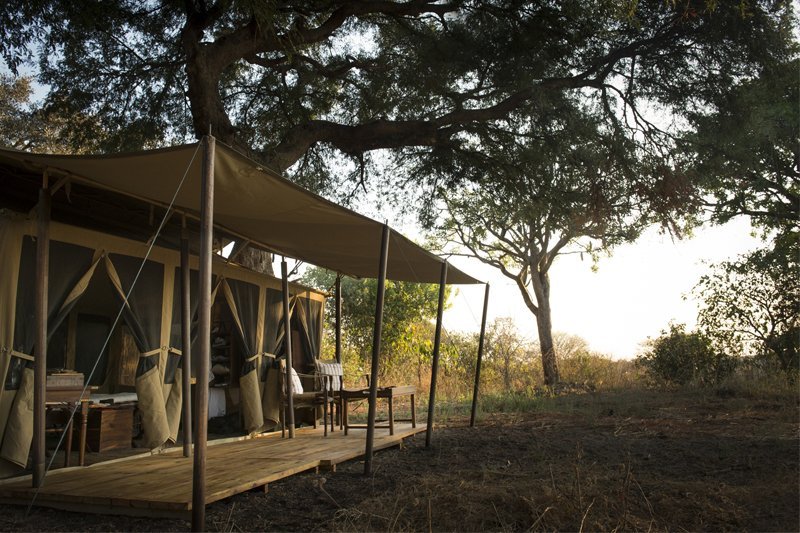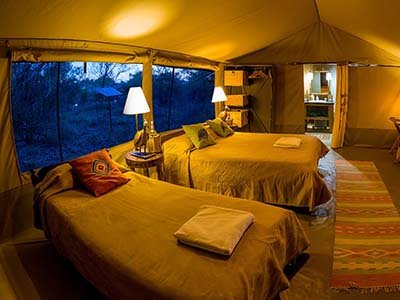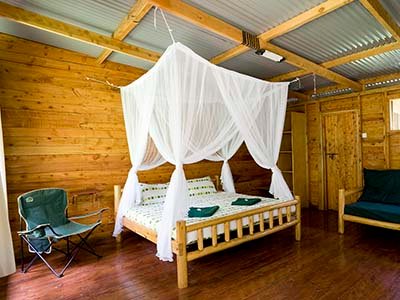Katavi National Park
Katavi National Park was founded in 1974, but it was expanded to 4,471 square kilometres in 1997, making it Tanzania’s third largest national park. Katavi is bordered by the Rukwa Game Reserve (4,000 square kilometres), which together comprise the Katavi-Rukwa eco-system. It covers 125 kilometres from northwest to southeast. In general, no more than 960 meters above sea level. The Katisunga Plain, a large grassy plain of 425 km2, is the park’s defining feature.
Katavi is one of the few African parks that boasts the continent’s greatest biodiversity. From the grassy plains that are flooded annually to the cliff faces of the Rukwa Rift Valley, the scenery changes dramatically. Nevertheless, the park is mostly composed of unadulterated Miombo savannah. Even the more secretive species of antelope feel at home among the many herds. Only two parks in the world are home to both sable and roan antelope, and roan antelope are easier to identify than anyplace else in the world in Katavi.
Katavi is seldom visited by anybody but the most daring. Those who take the time to do so are rewarded with a breathtaking spectacle. Katavi National Park, Tanzania’s third largest park, is a place of mythology because of its isolation, freedom, and lack of human interference. Both the amount and diversity of creatures on display are astounding.
The Katuma River and its floodplains, which include the seasonal Lakes Katavi and Chada plain, are the best place to see large herds of wildlife in Tanzania. During the rainy season, they seem quite different than during the dry. When it rains, the grass grows several meters high, transforming the otherwise arid landscape into a sea of verdant vegetation. During the wet season, waterfowl congregate around the lakeshores, but the best time to see wildlife is in the dry. As the climate in Katavi continues to dry up, more and more animals are drawn to the city’s few surviving watering holes.
The most common animals include elephants, zebras, and cape buffalo. Herds of buffalo may be three times as large as those seen in the Serengeti, and each population has tens of thousands of individuals. To that, you may add a plethora of giraffes and other huge beasts.

There is a lion pride wandering the area, as well as cheetahs, leopards, spotted hyenas, and wild dogs, and they are all on the prowl for potential prey.
Katavi is home to the greatest number of hippos and crocodiles in Tanzania because of its numerous ponds. They have dramatic territorial fights in the last puddles of the dry season when they all flop together. The roan and Sable antelopes are also found in large numbers.
Keep your distance from the black mamba, the continent’s most venomous snake, which can reach a stunning 4 meters in length and is one of the most exciting creatures to be found in the forested savannah.
Because of its isolation, this park has a lower human-animal interaction rate than other heavily visited parks. Katavi is a unique part of the park since it gives visitors a taste of the wilderness without really having to leave civilization.
KATAVI NATIONAL PARK WEATHER
Daytime highs range between 32 and 38 degrees Celsius (up to 40 degrees at the end of the dry season), with lows of 16 to 18 degrees Celsius. It rains from November to May, with the dry season being from June to October. From January through February, the precipitation is lower than usual, making it possible to travel on all park roads.
BEST TIME TO VISIT KATAVI NATIONAL PARK
May until October is the ideal time to go.
How to get to Katavi National Park, TANZANIA
Getting to Katavi has never been easier, with the choice of either flying or driving. If you choose to drive, take the scenic route from Dar es Salaam, covering 980 kilometres on a well-maintained asphalt road to Tunduma, before traversing the last 435 kilometres on a bumpy but unforgettable journey to Sitalike. This route offers a glimpse of rural Tanzania, with its quaint villages, bustling markets, and friendly locals.
For those who prefer to fly, private flights are available to Mpanda Airport or the park’s Sitalike and Ikuu airstrips. Several reputable businesses operate these flights, ensuring a smooth and hassle-free journey to the park.
ACCOMMODATION OPTIONS ON A WILDLIFE SAFARI TOUR IN THE PARK
You may find a camp ground, bandas, and a rest area within the park (booked through the park). luxurious tent resorts that are privately owned. Two inexpensive motels are located just outside the park’s gates.
These are some of the few facilities tourists to the Park can consider:-
- Katavi Wildlife Camp: Tent camp in the center of the park with private bathrooms
- Chada Katavi Camp: On the banks of the Katuma River, an opulent camp offers roomy tents with private toilets.

Katavi National park, Tanzania Chada Katavi tented Camp - Foxes Katavi Camp: A modest tented camp in a remote part of the park is perfect for a private and romantic getaway.
- Katavi Tented Camp: With spacious tents and private restrooms, this permanent camp is close to the park’s administration building.
- Mbali Mbali Katavi Lodge: Located on a hilltop overlooking the park, this opulent lodge has spacious rooms with private bathrooms.

Mbali Mbali Camp, Katavi National Park Tanzania - Ikuu Wilderness Camp: An intimate and off-the-beaten-path experience is offered by this secluded tent camp, which is situated in a private concession inside the park.
MAIN ACTIVITIES AND ATTRACTIONS IN KATAVI NATIONAL PARK
Safaris may consist of anything from game drives to guided hikes, from bird viewing to camping. Or you may go to Lake Katavi and meet the shaman who tends the tamarind tree that bears the name of the famous hunter Katabi. Offerings are still left here by locals who hope to gain the spirit’s favour.
Wildlife viewing.
Katavi is home to a wide variety of species, including enormous herds of buffalo, elephants, giraffes, zebras, and antelopes, as well as predators like lions, leopards, and hyenas. Visitors can get close to the animals by going on game drives, walking safaris, and fly-camping.
Bird watching.
Katavi is a birdwatcher’s dream with over 400 different bird species. The park is famous for the vast flocks of water birds that assemble around the rivers and lakes, including storks, pelicans, and herons.
River activities.
Boat safaris, fishing, and viewing of other aquatic dwelling wildlife including hippopotamus are all possible in the park, which is located between the Katuma River and Lake Katavi.
Walking safaris.
Visitors may explore the park on foot and get a closer look at the smaller animals, birds, and plant life via guided walking safaris, which are a popular activity in Katavi.
Cultural experiences.
Katavi National Park is surrounded by various ethinic groups including the Sukuma, Nymwezi, Fipa, Tatoga and Nyakusa. These tribes carry out different festivals and traditional activities that are worth witnessing while in the area.
- Sukuma: Sukuma, Tanzania’s largest ethnic group, have a rich culture. Tourists interested in Sukuma culture may visit a nyumba ya Mungu, or Sukuma farmhouse. The Bujora festival honours Sukuma culture and heritage. Celebrations include traditional music, dancing, and cuisine.
- Tatoga: Semi-nomadic Tatoga are known for their traditional lifestyle. Visit a Tatoga village to learn about their culture and people. The Tatoga also celebrate the Kitangari Festival, which honours their heritage. This celebration features traditional music, dance, and food.
- Nyakyusa: Agriculturists, the Nyakyusa are known for their woodcarving and basketry. Visit a community to observe weaving and beaded displays to learn about Nyakyusa culture and agriculture. The Nyakyusa celebrate several festivals, including the harvest-starting Bulabo celebration. Guests may enjoy traditional dances, music, and food.
- Nyamwezi: Another ethnic group in Katavi National Park is the Nyamwezi, known for their ironwork. One such cultural heritage is the Gondo festival, which celebrates the end of the rainy season with traditional ironworking and blacksmithing demonstrations.





